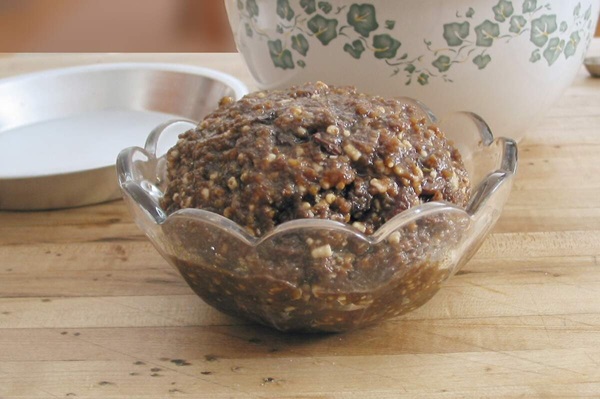National Mincemeat Day is on October 26. The original mincemeat recipe is over 500 years old and includes a mix of chopped fruit, meat, and alcohol, used as a pie filling. It features unusual spices for meat, like nutmeg and cinnamon, and uses fruits similar to those in traditional fruit cakes. Although it’s popular in Australia, the U.S., and South Africa, many people find its taste combination unusual. National Mincemeat Day celebrates this unique dish.
History of National Mincemeat Day
in the 15th century, bakers preserved meat with fruits and spices, creating mincemeat pies. Originally, vinegar and wine were used for fermentation, while medieval recipes included nuts, cloves, mace, and cinnamon.
Eventually, distilled alcohol and brandy replaced the earlier methods. In Europe, mincemeat became known as a hearty food common in traditional rural homes. In England, it evolved into a classic holiday treat.
In the 19th century, the recipe for mincemeat evolved to include raisins, apples, and candied lemon peel. Apple mincemeat, which didn’t contain meat, was seen as a healthier cleaner option.
By the 20th century, any similar mixture, including meatless versions, began to be called mincemeat. Like spirits, mincemeat was aged to enhance its flavors and improve its texture by breaking down meat proteins. Properly preserved mincemeat can be stored for 2 to 3 years.

Although the origins of National Mincemeat Day are unclear, it is celebrated widely in the United States and around the World. Mincemeat is a popular treat during the holiday season, especially at Thanksgiving, where it is often served with cheese or apple pie.
| 1500 A.D. (Mincemeat is Born) | Mincemeat comes from bakers trying to preserve meat by mixing in spices and diced fruit. |
| 1800s (Change in the Recipe) | Distilled spirits and brandy are used in the making of mincemeat. |
| 1900s (Meat is Excluded) | People began calling any recipe with a similar mix of ingredients, even those without meat, “mincemeat.” |
| 2000s (National Mincemeat Day) | National Mincemeat Day was created to honor this dish, which is popular in many countries. |
5 Interesting Facts About Mince Pie Traditions
- Stirring Direction Matters: Stirring mince pies clockwise was believed to bring good luck while stirring them anti-clockwise was thought to invite bad luck.
- Family Tradition: Each family member was expected to take a turn stirring the mince pies, which was believed to bring joy and happiness to the home.
- Health Beliefs: Eating mince pies every day for the 12 days of Christmas was thought to promote good health.
- Christmas Connection: The spices in mince pies, such as cloves and cinnamon, were believed to be among the gifts brought to baby Jesus by the Wise Men.
- Original Shape: The earliest mince pies were oval-shaped, symbolizing the shape of baby Jesus’s crib.
Conclusion
In conclusion, National Mincemeat Day on October 26 is a celebration of a rich and historical culinary tradition that spans over 500 years. From its origins as a preservation method involving meat, fruit, and spices in the 15th century, to its evolution into a beloved holiday treat, mincemeat reflects a fascinating journey through time and taste.
The evolution of mincemeat from its hearty, meaty roots to the more modern, often meatless versions highlights the dish’s adaptability and enduring popularity. Celebrated in various countries, mincemeat continues to be a symbol of festive tradition, enjoyed during special occasions like Thanksgiving. National Mincemeat Day serves as a reminder of the unique flavors and historical significance of this distinctive pie filling, inviting us to appreciate and perhaps try a slice of history.
Frequently Ask Question
When is National Mincemeat Day celebrated?
National Mincemeat Day is observed on October 26 each year.
What is mincemeat?
Mincemeat is a traditional pie filling made from a mixture of chopped fruit, meat, and alcohol, along with spices like nutmeg and cinnamon. It is often used in pies and can include various fruits similar to those in fruit cakes.
Is mincemeat popular in other countries?
Yes, mincemeat is enjoyed in countries such as Australia, the U.S., and South Africa, and is especially popular during the holiday season.
How long can properly preserved mincemeat be stored?
Properly preserved mincemeat can be stored for 2 to 3 years.
What is the history of mincemeat?
Mincemeat originated in the 15th century when bakers preserved meat with fruits and spices. Initially, vinegar and wine were used for fermentation, but these were later replaced by distilled alcohol and brandy. By the 20th century, mincemeat had evolved to include meatless versions, and the term “mincemeat” came to describe any similar mixture.
You may also like to read, National Chicken Fried Steak Day – October 26, 2024
